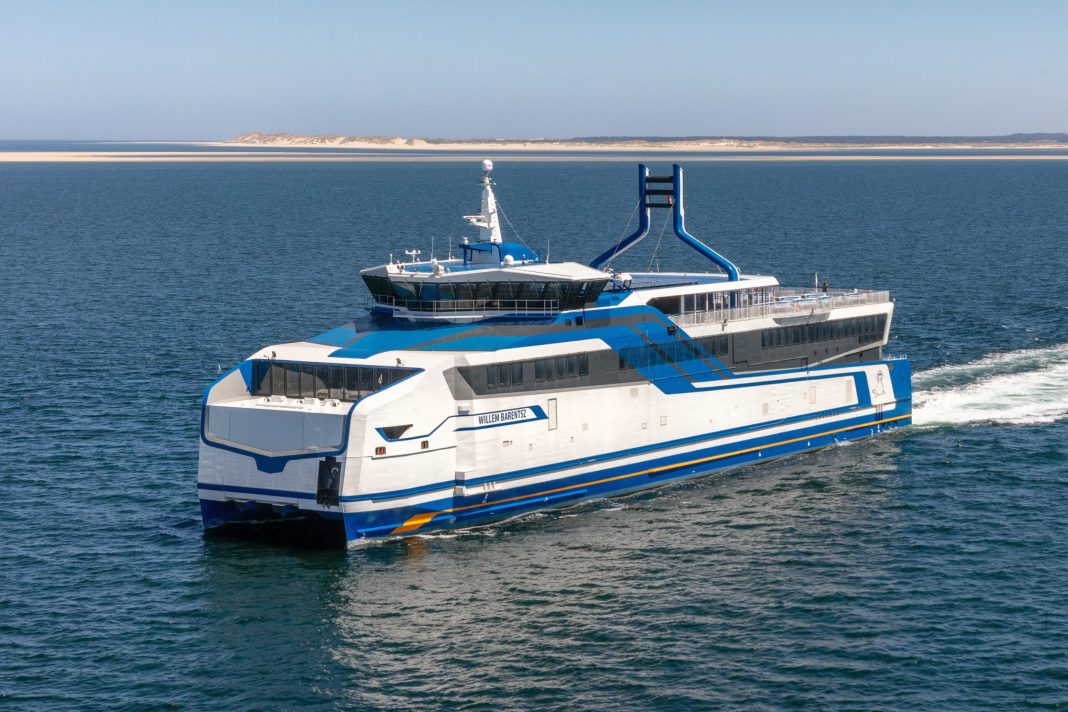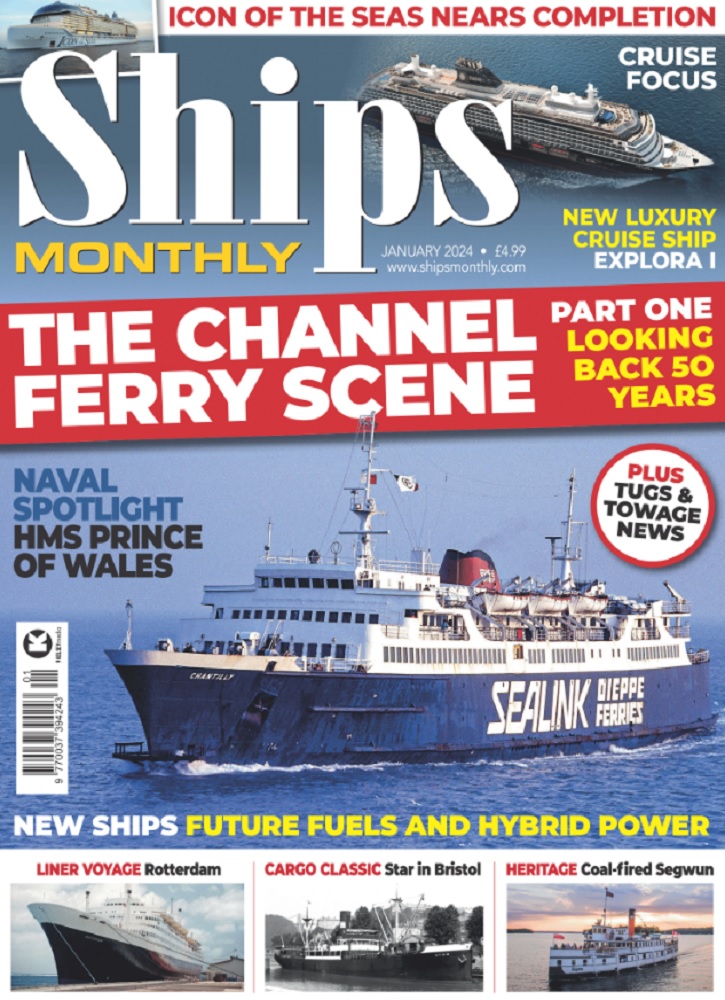Rederij Doeksen’s new LNG catamaran, Willem Barentsz, began service on 3 July 2020. Her sistership Willem de Vlamingh will follow in September.
These ships are The Netherlands’s first (single fuel) LNG ferries and the first vessels in the world with single-fuel, direct-drive LNG engines propelling fixed rudder propellers. The ships will be deployed on the ferry connection to the Dutch isles Vlieland and Terschelling.
The introduction of this new LNG-ferry concept, combined with heat recovery, more efficient hull lines, light weight construction and solar panel means a significant reduction in harmful emissions: -10% CO2, -90% nitrogen oxides (NOx), -100% sulphur oxides (SOx), -95% particulate matter.
Doeksen’s ambition is to progressively blend standard LNG with bio-LNG or LBG as soon as this type of fuel becomes sufficiently available, reducing CO2 emissions even further.
Paul Mellens, CEO of Rederij Doeksen, presented the new ship to the press and invitees on Wednesday, 1 July.
He said: “Today is a great day. Due to a variety of circumstances, the COVID-19 crisis not least among them, the road to this fantastic moment has been long and bumpy. But the result of everyone’s efforts is impressive, and something of which we can be extremely proud.’
Willem Barentsz differs from its predecessors in many ways. For her design, the focus was on the guest experience and the vulnerable Wadden Sea ecosystem, which is also a UNESCO World Heritage Site.
So, Willem Barentsz is an efficient, lightweight, LNG catamaran with low emissions and an interior with facilities that contribute to the island experience of our loyal guests.
BMT developed the vessels from preliminary to detailed production design. Sylvain Julien, Director of Naval Architecture points out: “As always, developing an entirely aluminium ship that complies with national regulations generally based on steel constructions has been a challenge.
“In addition to a meticulously optimised hull form, the final result shows the advantages in terms of low energy consumption and, specifically for the ferry routes carried out by Rederij Doeksen, the low operational draught.”
Rolls-Royce delivered two single-fuel gas engines for each of the new ferries. The 16-cylinder MTU series 4000 engines have a capacity of 1492 kW and ensure that the ferries can reach a top speed of 14 knots while the acceleration capacities are comparable to those of a typical high-speed diesel engine.


